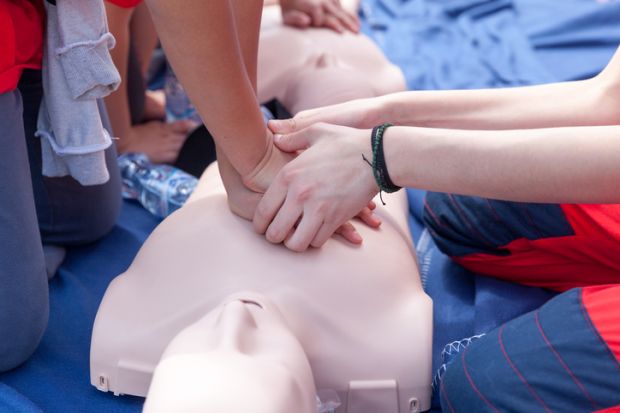International medical education is big business – and not merely in the anglophone countries traditionally favoured by international students. A September trip to Georgia by NVAO, the accreditation organisation of the Netherlands and Flanders, revealed that the medical degree industry is flourishing in the Caucasus, too.
We were there to run a training session at the request of a private university in Tbilisi. The Georgian staff and students involved were captivated by the quality assurance gibberish we introduced them to, as well as the interactive learning methods, the out-of-the-box fringe sessions (“draw a flower”, etc) and, above all, our faithfulness to time schedules. Despite their positive attitude, however, clouds gathered over the proceedings as the state of affairs in Georgian medical education became clearer.
It turned out that our host university was one of 20 Georgian institutions competing for international medical students. The growth is largely driven by private medical schools, of which there are currently 15, but even state universities may feel obliged to offer English-taught MD programmes in order to cover the increasing costs of medical education.
The Georgian Medical Student Association estimates that 18,000 students are enlisted in Georgian medical schools, 80 per cent of whom are foreigners. These dollar-paying students, from countries such as India, Iraq and Nigeria, bring in much-needed funds in a country largely dependent on foreign currency. However, in a competitive climate, quality is not always the top priority.
The concern is illustrated by the numbers. Georgia has an estimated population of 3.7 million. Neighbouring Armenia has 2.7 million and Azerbaijan has 10 million. The last two have five medical schools each. It is hard to imagine that Georgia can provide enough patients, medical teaching staff, hospitals and internships for the clinical training of so many students. And while local teaching staff are scarce, Georgian medical schools can hardly afford to fly in staff from abroad. Full professors are even scarcer, if they exist at all, and any research training is offered mainly extracurricular.
The quality of the learning experience is also at stake with so many students per patient and with fluency in the local language so rare among those students. How this language barrier works in practice, for both the patient and the student, should be a cause of great concern. A limited amount of language training in Georgian is clearly not the final answer. According to some of the local students we spoke to, very few of their international peers intend to stay in Georgia; for most, the main goal is to obtain a medical degree in six years and to make good use of the title and the status that come with it in their home country.
This is not the situation bargained for when the European Higher Education Area (EHEA) was established to boost international mobility by harmonising values and processes in 48 different countries, including Georgia. The concern about the quality implications of the growing market for medical programmes has already prompted the US to revise its entry requirements for foreign doctors; from 2023, eligibility for the US Medical Licensing Examination will be restricted to graduates from medical schools or programmes accredited by an agency recognised by the World Federation for Medical Education.
NVAO and our Georgian equivalent, the National Centre for Educational Quality Enhancement (NCEQE), are the first European quality assurance agencies to be recognised by the federation. NVAO’s participation has resulted in useful insights around internships and the framework for basic medicine, while the outcome for the NCEQE focuses on implementing a revised medical curriculum.
Starting afresh with a new medical curriculum in Georgia certainly offers opportunities for quality enhancement. For instance, a programme that, until recently, was exam-driven, will now have greater opportunity for student-centred learning. But the question remains whether to support the medical education “market”.
Quality assurance in the EHEA is largely based on trust in both the universities and the quality assurance agencies. On balance, NVAO continues to believe that this is still as it should be. But if the quality issues in medical education persist, there may need to be a rethink.
Michèle Wera is a senior policy adviser for NVAO in The Hague.
POSTSCRIPT:
Print headline: Quality is the best medicine
Register to continue
Why register?
- Registration is free and only takes a moment
- Once registered, you can read 3 articles a month
- Sign up for our newsletter
Subscribe
Or subscribe for unlimited access to:
- Unlimited access to news, views, insights & reviews
- Digital editions
- Digital access to THE’s university and college rankings analysis
Already registered or a current subscriber? Login








